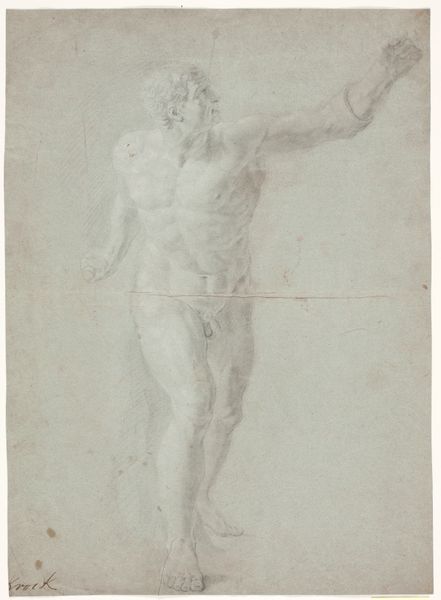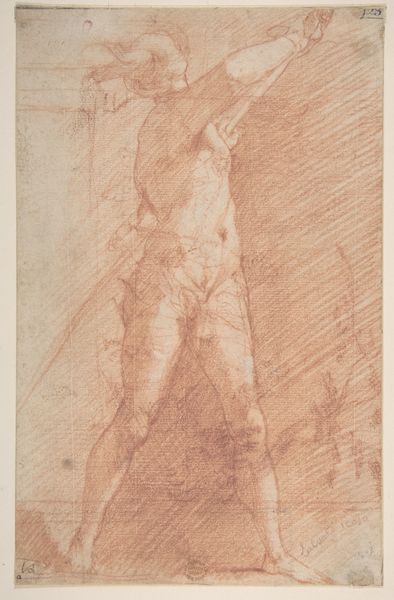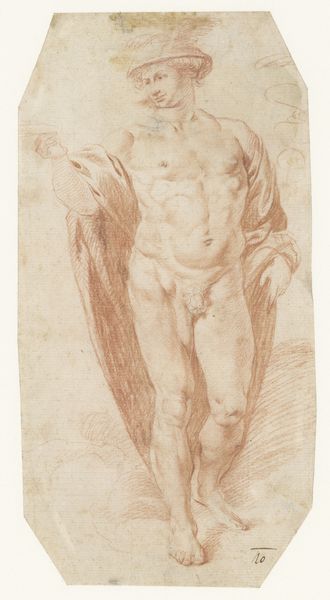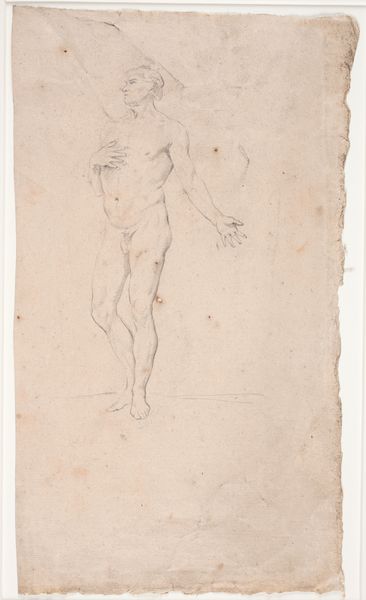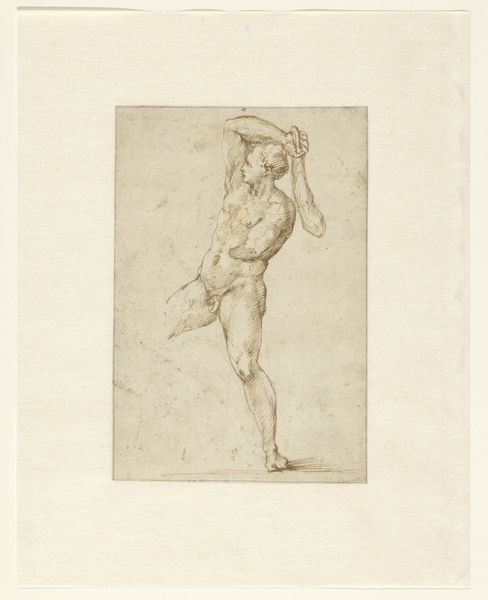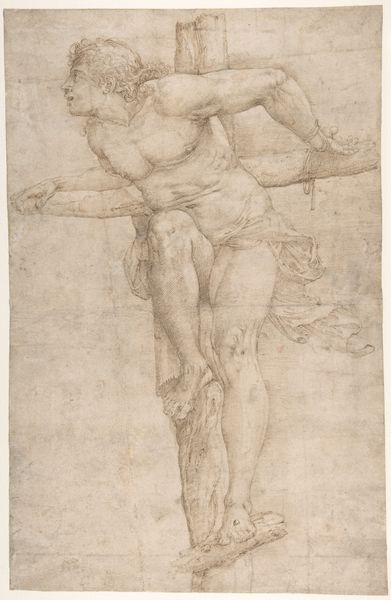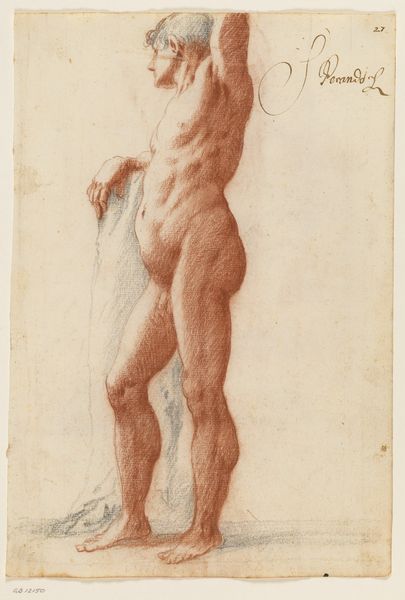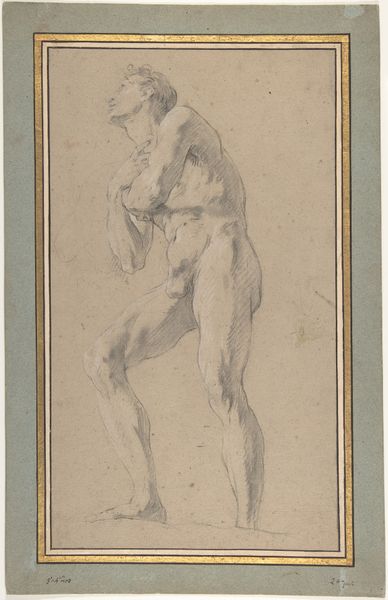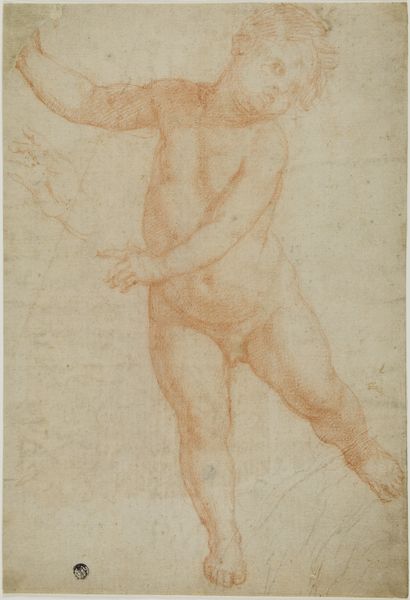
Study of a fighter defending himself (copy after Raphael); sketch of a lunette after 1511
0:00
0:00
drawing, ink, pencil, chalk, charcoal, architecture
#
portrait
#
drawing
#
high-renaissance
#
charcoal drawing
#
figuration
#
ink
#
pencil drawing
#
pencil
#
chalk
#
charcoal
#
academic-art
#
architecture
Copyright: Public Domain
Curator: This is an interesting drawing attributed to Raphael, titled "Study of a fighter defending himself; sketch of a lunette," dating from after 1511. It's currently held in the Städel Museum. Editor: It's captivating. I'm struck by the raw physicality and movement captured in a seemingly simple drawing. How do you approach understanding a piece like this? Curator: I focus on the materiality of the piece and its production. Look at the various media used—chalk, charcoal, pencil, ink. What do these choices tell us about Raphael's process? The figure study suggests a concern with anatomy, classical form, and obviously, the human body as a tool and a means of visual expression. And why this body? Who did he plan this study for? Was it meant to create paintings of the human labor, celebrate the individual, or provide resources to his workshop? Editor: That’s insightful! I hadn’t considered the sheer labor that would have gone into producing these drawings, or their consumption in his time. Does the lunette sketch factor into that equation? Curator: Precisely! The architectural element opens another avenue for examination, suggesting both a practical application and artistic aspirations, and again, the means of the workshop in which this drawing may have served. Consider the expense of materials like paper and pigment. This would suggest a higher level of investment and more careful artistic ambition that the average preparatory sketch. These drawings likely circulated within his workshop to convey complex directions, dictating labor division, and regulating a workflow between multiple bodies and creative voices. It is crucial that the drawing is meant for further transformation by laborers. Editor: That makes the piece feel so much more complex than just a preliminary study. It reveals this entire economy of artistic production. Curator: Indeed. By interrogating the means of production, the labor involved, and the social context, we challenge traditional notions of Raphael as a solitary genius and recognize the collaborative and material nature of art-making. Editor: So, by understanding the materiality and the making of it, we see a much broader picture? Curator: Exactly. Considering these aspects brings into focus the historical economic conditions, and transforms the piece into much more than the work of just one author. Editor: That is eye-opening, to see it as an input, a tool with complex and extended lives beyond Raphael, used by others to generate wealth and to realize the great paintings for which he is celebrated. Thanks for sharing such a unique lens on this drawing!
Comments
No comments
Be the first to comment and join the conversation on the ultimate creative platform.
